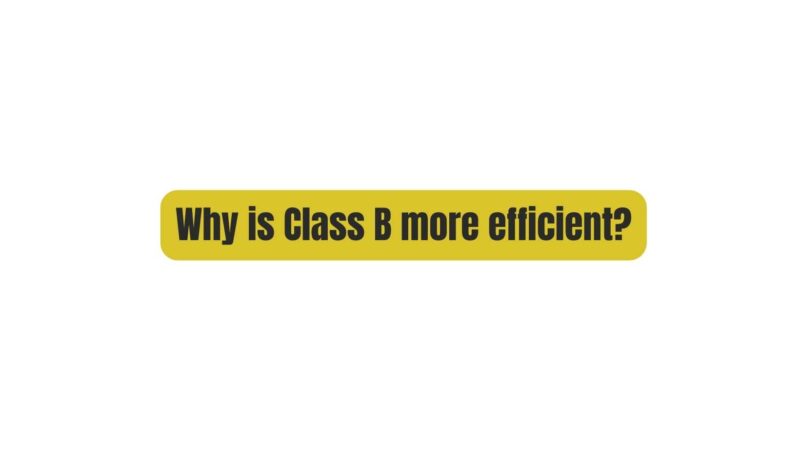Class B amplifiers are more efficient than class A amplifiers because they only dissipate power when they are conducting. Class A amplifiers, on the other hand, dissipate power even when there is no input signal.
In a class B amplifier, the output transistors are turned on for only half of the input signal cycle. This means that they are only dissipating power for half of the time. In a class A amplifier, the output transistors are turned on for the entire input signal cycle, which means that they are dissipating power all the time.
The efficiency of an amplifier is calculated as the ratio of the output power to the input power. The efficiency of a class B amplifier can be up to 78%, while the efficiency of a class A amplifier is typically only around 25%.
The higher efficiency of class B amplifiers makes them a good choice for applications where power consumption is important. For example, class B amplifiers are often used in audio amplifiers, radio transmitters, and power supplies.
Here are some additional points that you can include in your article:
- Class B amplifiers are more efficient than class A amplifiers because they only dissipate power when they are conducting.
- The efficiency of a class B amplifier can be up to 78%, while the efficiency of a class A amplifier is typically only around 25%.
- Class B amplifiers are often used in audio amplifiers, radio transmitters, and power supplies.
- Class B amplifiers can produce crossover distortion, but this can be reduced by using complementary transistors or a bias circuit.


